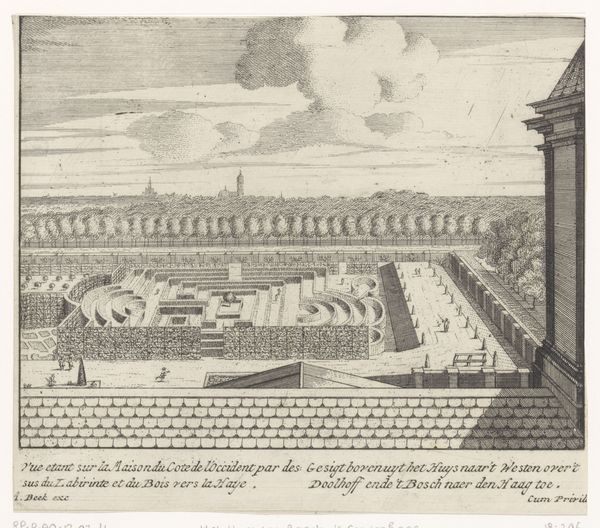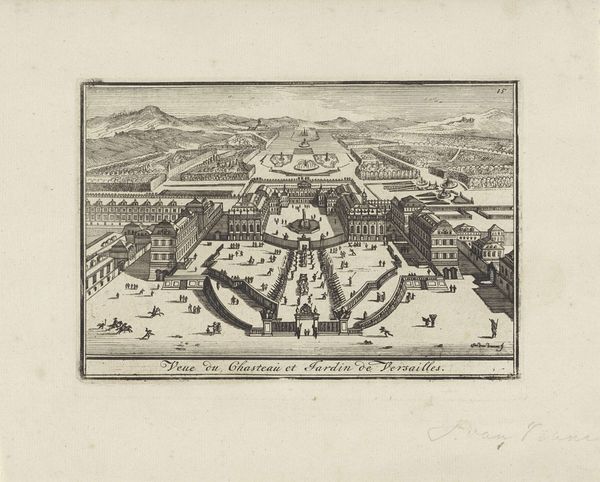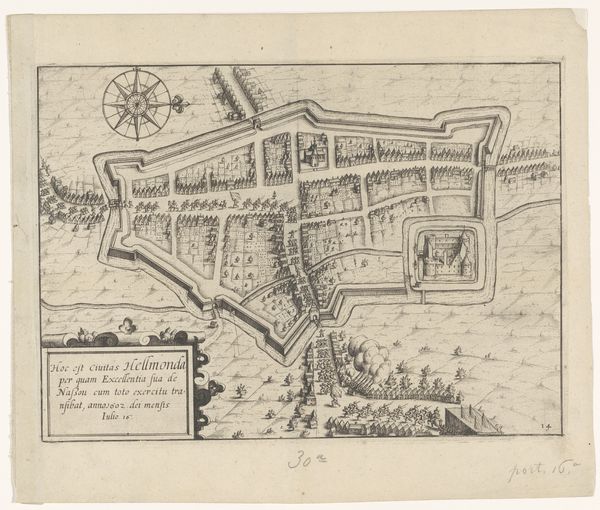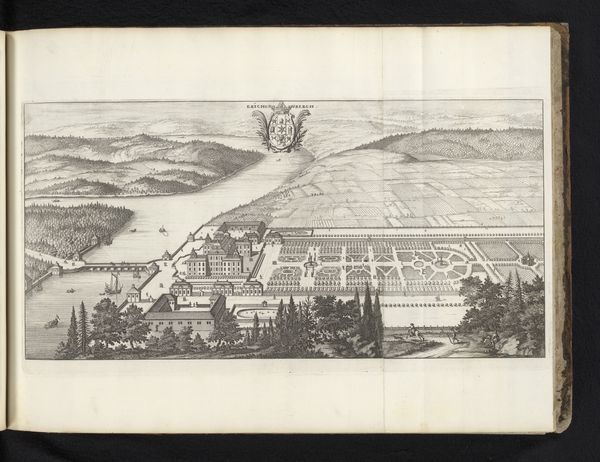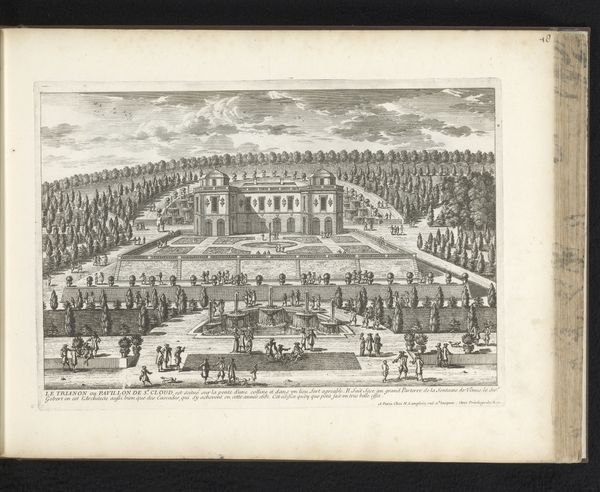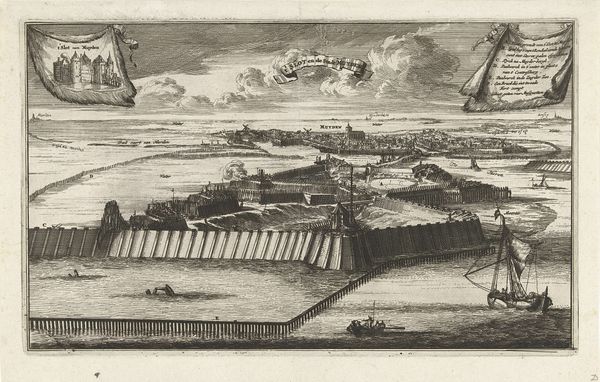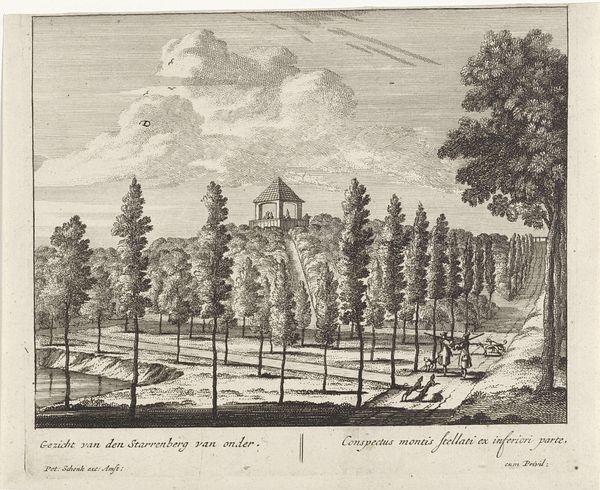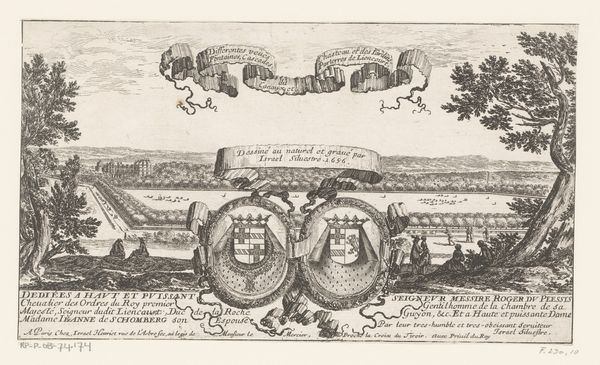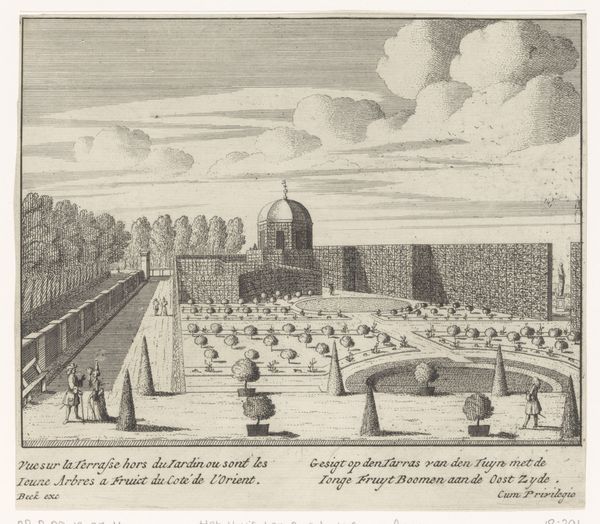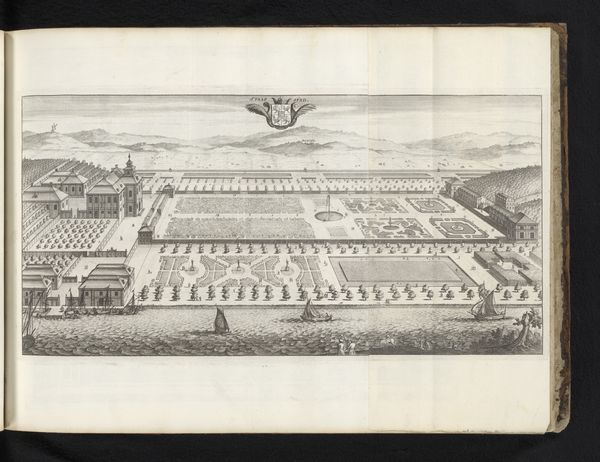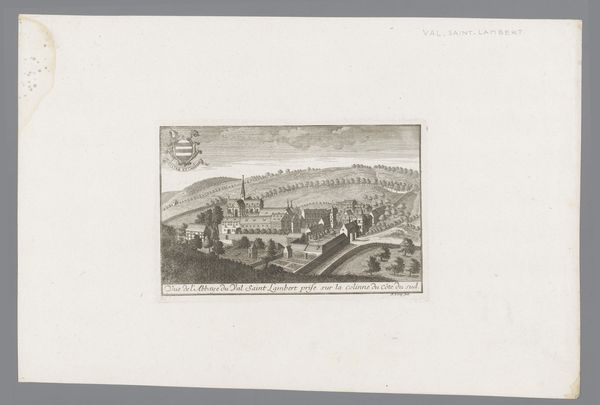
print, engraving, architecture
#
baroque
# print
#
old engraving style
#
landscape
#
cityscape
#
engraving
#
architecture
Dimensions: height 125 mm, width 302 mm
Copyright: Rijks Museum: Open Domain
Editor: This is "View of the Aqueduct at Arcueil," an engraving made sometime between 1630 and 1662, credited to Claude Goyrand. It depicts, as the title suggests, a massive aqueduct dominating a formal garden and landscape. It is pretty striking to observe the contrast between the rigidity of the architecture with the implied serenity of nature. What stands out to you most about this piece? Curator: The compelling aspect for me is understanding the labor that underpinned this scene. Consider the sheer effort involved in the quarrying, transportation, and meticulous construction of that aqueduct. Look at the precision implied by this style. Each etched line speaks to a complex socio-economic context where such monumental projects became feasible and desirable as demonstrations of power and progress. How does the medium, printmaking, further amplify this? Editor: In that its function could be to spread that vision to other people. Almost like propaganda for future works? Curator: Exactly. Printmaking enabled the wide dissemination of this idealized image, turning infrastructure into spectacle and asserting the dominance of human intervention in the natural landscape. What relationship might exist between such displays of mastery, the materials available for such projects, and consumption habits of that time? Editor: I hadn't thought about the aqueduct itself as a commentary on material resources, but now that I do, the scale really amplifies your point about production and consumption. Curator: It is very easy to view the composition from an aesthetic point. By focusing on material and production processes we see the political implications of Goyrand’s landscape in this period. Editor: Thanks! I learned to see this piece of artwork beyond the aesthetic elements. The relationship between process, materials, labor, and context gave me a richer understanding of Goyrand's work and his era.
Comments
No comments
Be the first to comment and join the conversation on the ultimate creative platform.
